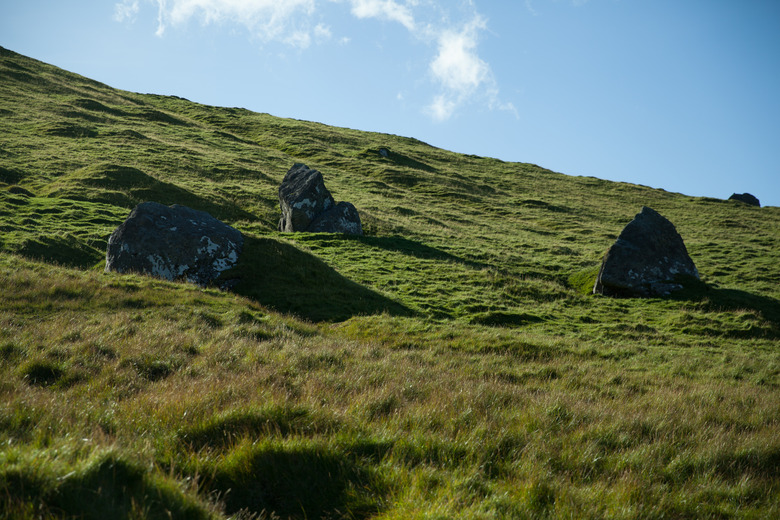Temperature And Precipitation In The Temperate Grasslands
Temperate grasslands have significant variations in temperatures with hot summers and cold winters. Precipitation is moderate with just enough rain and snow to distinguish these areas from deserts. Because grasslands have few if any trees, strong winds often blow through them adding to the dryness. Temperate grasslands are found in the prairies and plains of central North America, in the South African veldts, Hungary's pusztas, the steppes of Russia and the pampas of Uruguay and Argentina.
Summer
Summer
The prairie grassland average temperature often rises to more than 100 degrees F and periods of up to two months with no rain at all are common. Grassland plants are adapted to hot summer temperatures and drought with their slender leaves that help them retain water and deep root systems. Summer's heat and dryness often results in fires caused by lightning or human activity. Grasses, with their deep roots, grow back after a fire even more vigorously with the help of the carbonized organic matter.
Winter
Winter
Grasslands turn brown in winter and often have a dusting of snow. Temperatures plummet well below 0 degrees Fahrenheit. For example, temperatures in the grassland areas near Winnipeg in Canada can dip to -10 degrees F and average -4 degrees F. Plants use winter snow as insulation, trapping it among leaves and stems.
Grassland Precipitation
Grassland Precipitation
Grasslands are found in the interior of continents and in rain shadows, regions of lower rainfall on the lee side of a mountain. These areas receive between 9.8 and 35 inches of rain and snow each year, compared with tropical rain forests with more than 79 inches and deserts with less than 9.8 inches of precipitation. Most of the grassland precipitation falls in winter and spring. Grassland animals and plants contend with drought in the hot summers.
From Southern Grasslands to Steppes and Prairies
From Southern Grasslands to Steppes and Prairies
The amounts of rain and snow vary in the grassland biome. Southern temperate grasslands are nearer to the ocean than the prairies; they experience more rainfall more evenly spread throughout the year. With up to 35 inches of annual rainfall, grasses grow taller. A few trees, such as cottonwoods, oaks and willows, can be found growing on riverbanks. In the less humid zones of the steppes and prairies, which are further from the ocean, the 12 to 20 inches of precipitation falls mainly in winter and spring. The grasses in these areas are shorter and sparse. Some unique grassland areas can have as much as 79 inches of rainfall when other factors, such as minerals in the soil, prevent most plants from growing.
Cite This Article
MLA
Davidson, Elaine. "Temperature And Precipitation In The Temperate Grasslands" sciencing.com, https://www.sciencing.com/temperature-precipitation-temperate-grasslands-8498038/. 22 November 2019.
APA
Davidson, Elaine. (2019, November 22). Temperature And Precipitation In The Temperate Grasslands. sciencing.com. Retrieved from https://www.sciencing.com/temperature-precipitation-temperate-grasslands-8498038/
Chicago
Davidson, Elaine. Temperature And Precipitation In The Temperate Grasslands last modified March 24, 2022. https://www.sciencing.com/temperature-precipitation-temperate-grasslands-8498038/
